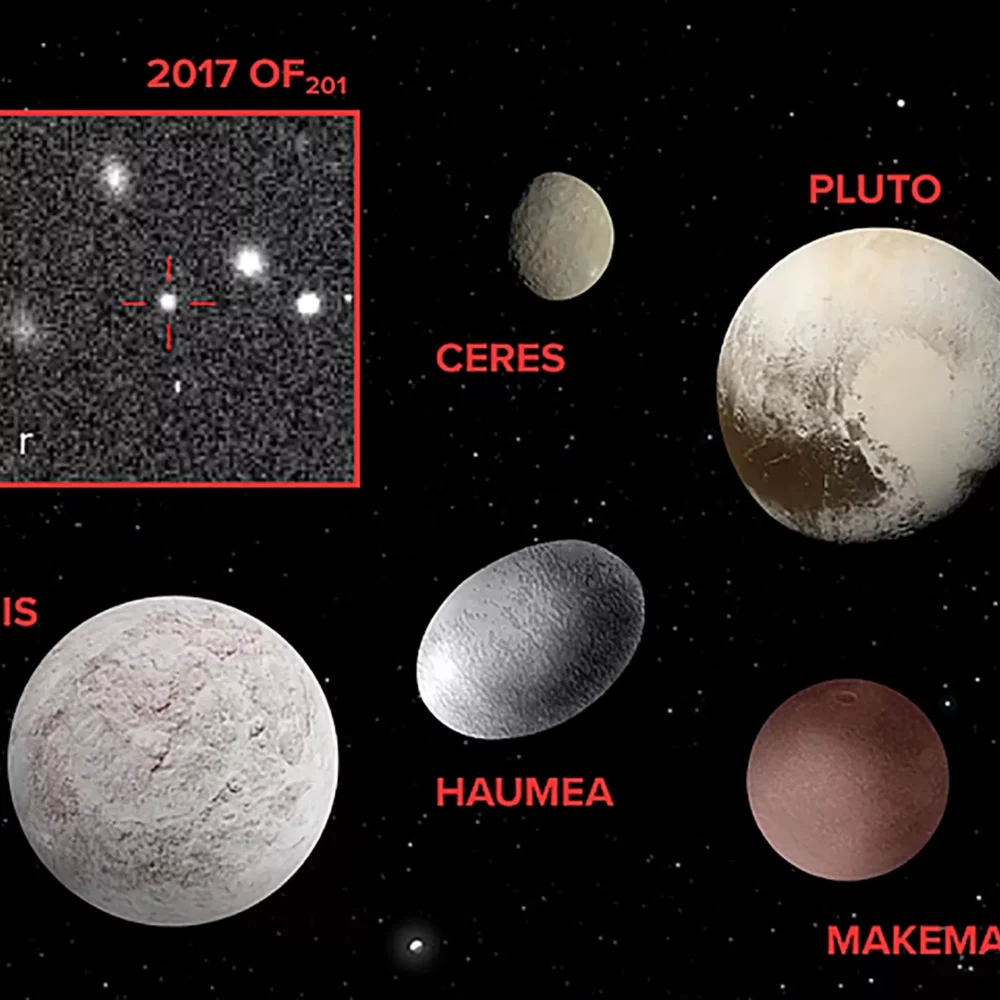Researchers have identified a new trans-Neptunian object (TNO) named 2017 OF201, an icy world that lurks beyond Neptune’s orbit in a breakthrough that reshapes our understanding of the outer solar system.
Led by Sihao Cheng of the Institute for Advanced Study, the discovery suggests that the space beyond the Kuiper Belt, once considered nearly empty, may instead be home to a hidden population of distant planetary bodies.
2017 OF201 is likely large enough to qualify as a dwarf planet, placing it in the same category as Pluto. It is estimated to be 700 kilometers in diameter and ranks as the second-largest known object in such a distant orbit. The object’s movement through space is extreme, taking 25,000 years to complete a single orbit around the Sun.
At its closest approach (perihelion), the object is 44.5 times farther from the Sun than Earth, roughly matching Pluto’s distance. But at its farthest (aphelion), it stretches a staggering 1,600 times Earth’s orbital distance from the Sun, cementing its status as one of the most remote detectable objects in the solar system.
Two groups of Trans-Neptunian Objects have very different orbital patterns
Scientists believe 2017 OF201’s current path results from gravitational encounters with a giant planet, which likely sent it outward to its current wide orbit. Cheng and his colleagues propose an even wilder scenario: the object may have first been ejected to the Oort Cloudthe vast shell of icy bodies surrounding the solar systembefore returning inward.
Many extreme TNOs appear to cluster in specific orientations, a phenomenon some astronomers see as indirect evidence of the hypothetical Planet Nine. This yet-undiscovered world could be gravitationally shaping their movements.
However, 2017 OF201 does not conform to this clustering pattern, raising new questions about Planet Nine’s influenceor even its existence.
“This object is an outlier,” noted co-researcher Jiaxuan Li. “Its orbit doesn’t quite fit the pattern used to support the idea of an undiscovered planet.”
Astronomers spotted 461 trans-Neptunian objects in our solar system
2017 OF201 was identified in 19 telescope exposures over seven years, using observations from the Victor M. Blanco Telescope and the Canada-France-Hawaii Telescope. Cheng and his team developed a computational algorithm to detect its subtle movement across the sky, connecting bright spots across different observations to track its trajectory.
Significantly, the discovery hints that many more objects like 2017 OF201 may exist but are too distant to detect. Since the object spends only 1% of its orbital time close enough to be seen, Cheng estimates that hundreds more could be in similar orbits, waiting to be discovered.
“This finding suggests the outer solar system may be more populated than we previously thought,” said Cheng.
Unlike some significant discoveries that rely on exclusive telescope access, Cheng’s team used archival data available to the public, meaning anyone could have identified the object with the right tools.
“This highlights the incredible value of shared scientific resources,” said Li. “A student, researcher, or even a citizen scientist could have made this discovery using the same openly available data.”
With new telescopes on the horizon and computational methods improving, the discovery of 2017 OF201 may be just the beginning. As scientists peer deeper into the unexplored regions of the solar system, the space beyond Neptune may prove far more complexand far less emptythan previously imagined.
Journal Reference:
Sihao Cheng, Jiaxuan Li, Eritas Yang. Discovery of a dwarf planet candidate in a vast orbit: 2017 OF201. arXiv. DOI: 10.48550/arXiv.2505.15806
https://www.techexplorist.com/extraordinary-dwarf-planet-discovered-edge-solar-system/99576/#utm_source=rss&utm_medium=rss&utm_campaign=extraordinary-dwarf-planet-discovered-edge-solar-system





